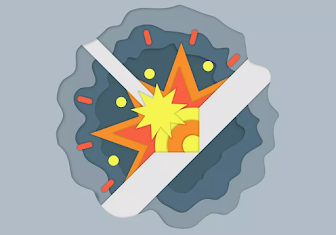International Conference on Welding Technology
11th Edition of International Conference on Welding Technology
https://welding-conferences.sciencefather.com/
Award Nomination - https://x-i.me/arunom
Abstract Submission- https://x-i.me/arumem
Choosing a weld monitoring system

Machine vision technology has recently advanced across several applications to capture detailed and complex data about the welding process to help ensure it is in control. In the past, fabrication shops would create ad-hoc methods to track and confirm the correct path of a welding bead in an automated system. Today, cameras and laser technology can accurately track weld paths, stick-out lengths of wires and electrodes, the shape and size of weld beads, and even the cooling rate of those beads once they are formed.
With the increased demand to automate welding processes, it’s important to see exactly how a weld is being produced to ensure productivity and accuracy are maintained. Using methods that keep operators a comfortable distance away from that welding process while it is underway creates an added level of safety and comfort.
In particular, three distinct forms of machine vision-aided imaging systems have become essential features of an automated welding process. A fabrication shop’s specific requirements determine which system makes the most sense for its operations.
Laser Triangulation Systems
For those interested in inspecting welds after they are complete, laser triangulation inspection systems are ideal. This is a machine vision technique that is used to capture 3D measurements by pairing a laser source with a camera mounted at an angle. The laser beam projects a line from the vertical position; the camera is mounted at an oblique angle to capture how the laser line scribes the surface of the target (see Figure 1). Using machine vision software technology, the laser line data is extracted from the images, allowing the user to measure various features of the weld profile and provide key feedback to the tube mill operators or host machine about the quality of the weld process.
The first laser triangulation system Xiris Automation developed was designed for the steel tube market, where mills wanted to inspect welds after a tube was finished to detect quality issues related to the forming, welding, and scarfing processes. The camera picks up the shape of the laser line that scribes the surface of the tube and measures key dimensions relative to predefined tolerances to determine if the weld is in control or not.

What this does for a tube mill is it simplifies and reduces mill setup time with real-time feedback on process adjustments. More importantly, it helps to improve tube weld quality, by performing 100 per cent in-line monitoring right at the point of welding on the mill. Because it is a non-contact and non-destructive testing process, it does not interfere with the forming, welding, and scarfing processes used to build the tube.
A similar laser triangulation system is available for scanning, inspecting, and recording the back side of a first-pass weld bead, typically found in large welding projects such as pipeline construction, shipbuilding, pressure vessel manufacturing, or large pipe fabrication.
High-Dynamic-Range Cameras
Attempts to capture open arc welds (GMAW, GTAW, laser, plasma) using standard cameras have taken many forms over the years, from looking at the weld through paper, to capturing the basic nature of the movement and “look” of the arc, to using filters to darken the arc somewhat to capture it in more detail. But much of the information is inevitably lost with such techniques. For instance, using an optical filter in front of the camera can lower the brightness of the arc and that of the background, making it very difficult to see the details around the weld arc such as the weld bead and substrate. As it may not be possible to remove such types of filters easily when there is no arc, the resulting weld area images when no arc is present end up being almost completely dark. While special filters such as LCDs or photochromic filters are possible solutions that can be switched from a “weld” mode to a “no-weld” mode on a camera, the dynamic range available with LCD filters and a photochromic filter’s speed of change make them less than ideal for use when imaging the weld area as the weld goes on and off.
The introduction of high-dynamic-range (HDR) imaging has changed the landscape of how welding can be imaged.
HDR has been used in photography for some time now. For example, most cell phones today have an HDR option on their camera, where multiple exposures of a picture are taken and mathematically combined to get the best possible contrast in the image. But that is in the service of creating just one still image on a consumer device. The task becomes more complex when creating a video, especially when taking into consideration the brightness of a weld arc, which can be 10 million times brighter than its surrounding darker background. This is a far greater brightness range than the eye can see, and even more than what a typical camera can see.
#welding #fabrication #metalwork #welder #iron #weldernation #tools #WeldingDescription #Aluminum #TigWelding #Cutting #Fabricate #StainlessSteel #WeldingEquipment #Oxy #FabricationShop #weldingblanket #weldingbook #weldingengineer #tigwelding.

Comments
Post a Comment